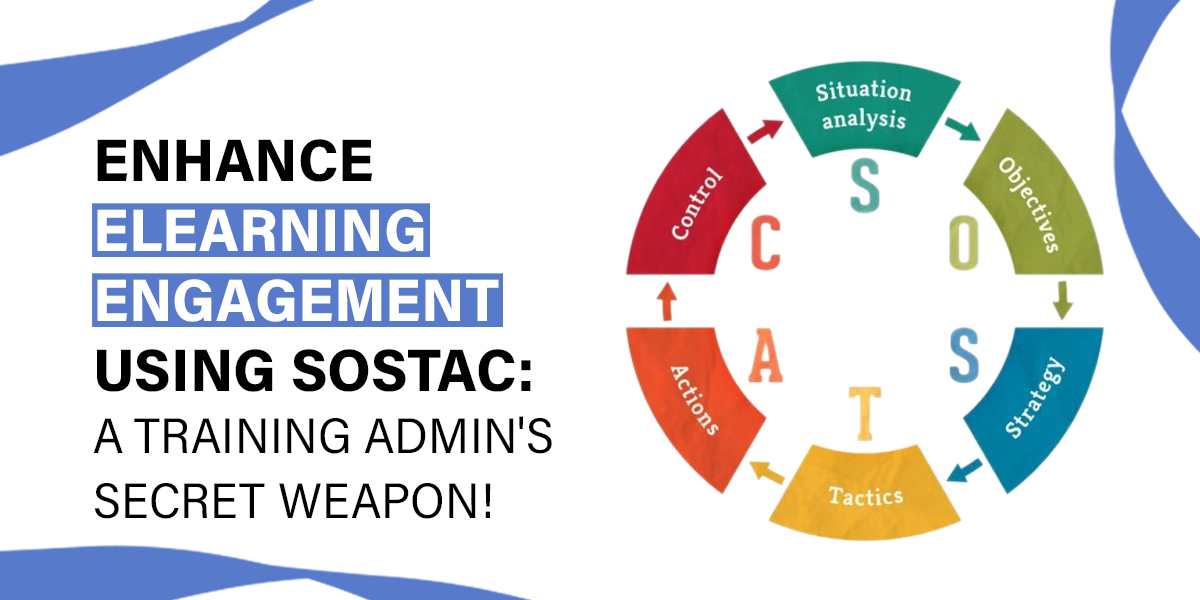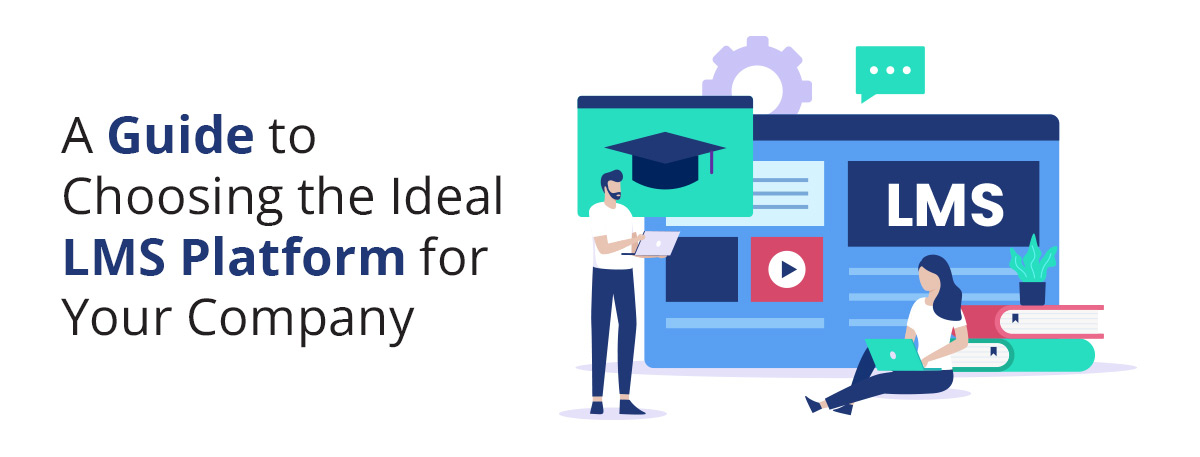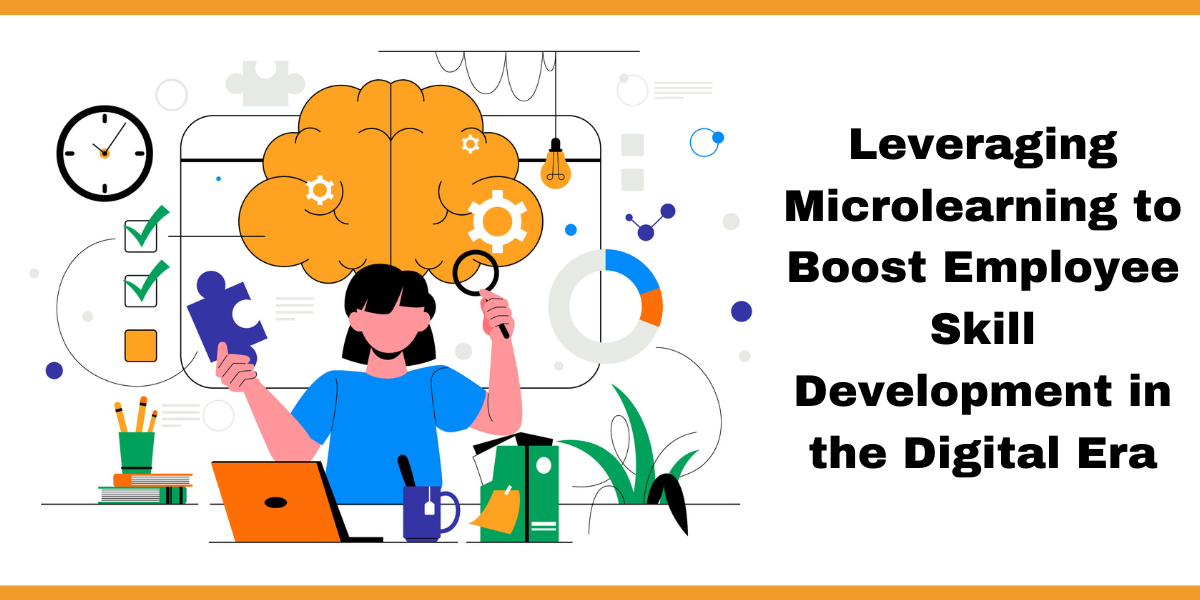We've all seen it, the glazed-over eyes staring at a computer screen, the mind seemingly miles away from the eLearning module supposedly imparting valuable knowledge. The traditional approach to online training often falls flat, leaving learners disengaged and ultimately failing to achieve desired learning outcomes. This can be incredibly frustrating for training administrators who pour time and resources into creating these programs.
But what if there was a way to break the cycle? Imagine a world where learners actively participate, retain information more effectively, and even find the training process enjoyable!
This is where SOSTAC steps in, this helps in promoting and implementing it in a way that fosters learner buy-in.
What is SOSTAC?
SOSTAC is a strategic planning model originally developed for marketing campaigns SOSTAC stands for Situation, Objectives, Strategy, Tactics, Action, and Control. It provides a structured approach to planning and implementing eLearning initiatives, ensuring they are targeted, results-oriented, and most importantly, capture learner interest. By applying SOSTAC, you can create a winning formula that fosters buy-in, drives participation, and ultimately leads to a more effective and successful training program.
SOSTAC can be used to create an engaging eLearning campaign for a company onboarding program. The first step is a thorough Situation Analysis. Here, you assess the current state of your eLearning program. Are learners struggling to complete existing modules? What's the learning environment like? Are they comfortable with the Learning Management System (LMS)? Understanding the target audience is crucial. Who are you training? What are their learning styles, prior knowledge, and tech proficiency? Finally, consider the organizational goals. What are the overall objectives of the onboarding program? What skills and knowledge do new hires need to be successful?
Once you have a clear picture of the situation, it's time to define your Engagement Objectives. What specific outcomes do you want to achieve? Is it increasing completion rates for onboarding modules by 20%? Improving learner satisfaction with the program? Encouraging active participation in discussions and knowledge checks? Setting clear, measurable objectives provides a roadmap for your campaign and allows you to track progress towards success.
With your objectives in mind, you can now develop a winning Strategy. Here, you'll determine the overall approach to achieve your engagement goals. The focus should be on creating a dynamic learning experience that caters to diverse learning styles and preferences. Consider revamping content into bite-sized, microlearning modules packed with interactive elements like gamification, simulations, and real-world scenarios. Social and collaborative learning is another powerful strategy. Integrating discussion forums and group activities promotes peer-to-peer learning, fostering a sense of community and encouraging active participation. Finally, ensure your eLearning modules are accessible on smartphones and tablets for on-the-go learning, catering to the mobile-first world we live in. Personalization is key – explore adaptive learning features that can tailor the learning path to individual needs and prior knowledge.
Now comes choosing Engaging Tactics. This is where you translate your strategy into concrete actions. To generate pre-launch buzz, consider creating a compelling campaign with explainer videos, social media teasers, and even knowledge contests to pique learner interest. Gamification is a powerful tool for boosting engagement. Awarding points, badges, and leaderboards not only motivates learners but also provides a fun way to track progress. Break down information into easily digestible microlearning bursts to combat information overload and keep learners focused. Incorporate interactive knowledge checks like quizzes, polls, and scenarios to reinforce learning and provide immediate feedback. Social learning features like discussion forums, group projects, and peer feedback mechanisms create a dynamic learning environment where learners can learn from each other.
With a well-defined plan in place, it's time to take Action. Implement the chosen tactics according to your schedule. Develop comprehensive communication materials to promote the eLearning program and its benefits to learners. Don't forget to train managers and supervisors on how to support learners throughout the program. Their enthusiasm and encouragement can play a significant role in fostering engagement.
The final stage is Monitor and Control. This is where you track the effectiveness of your efforts. Key metrics to monitor include completion rates, learner satisfaction scores (obtained through surveys), and participation in interactive elements. Analysing learner feedback through surveys and discussions allows you to identify areas for improvement. Remember, SOSTAC is an iterative process. Be prepared to adapt your strategy based on the data you collect. Perhaps a specific tactic isn't resonating with learners – be willing to adjust and try something new.
By embracing SOSTAC, training administrators can move beyond simply delivering content and create truly engaging eLearning experiences. This strategic framework empowers you to transform your eLearning programs into powerful tools for workforce development. So, ditch the disengaged learner stereotype and unlock the full potential of your training initiatives with SOSTAC – your secret weapon for eLearning success!




